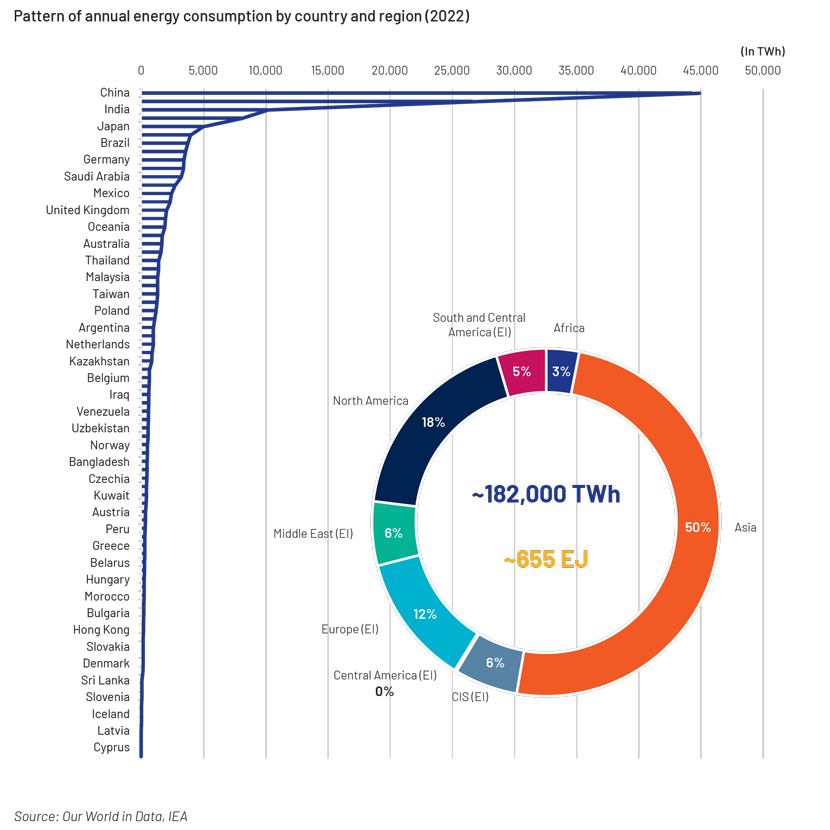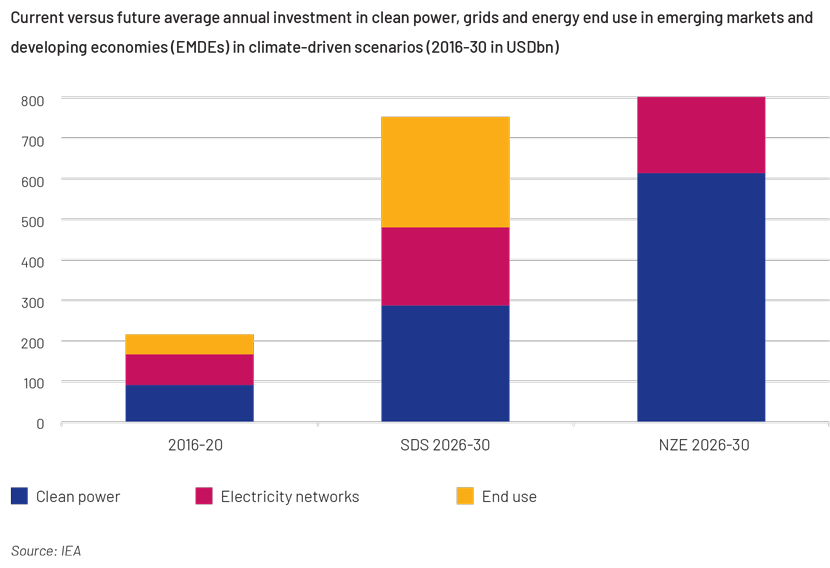Introduction
Introduction
As the world is driven increasingly by new-age technology, global energy demand is rising, with technological integration resulting in new sources of emissions. There is large-scale oversight now afforded such integration to ensure production control in line with decarbonisation strategies. The most achievable step towards reducing emissions by half by 2030 is implementation of an ambitious energy efficiency plan, increasing use of renewable energy sources and eliminating traditional energy sources. Instead of relying solely on technological advancements for success, encouraging awareness of the need for energy transition and engagement would promote changes in behaviour relating to energy consumption and result in a more balanced overall response. Perhaps the most difficult issue facing industrialised societies is the energy transition, which requires extensive social and technological transformation over a prolonged period of time. The energy transition is a complicated issue with a number of variables. Maintaining progress would, therefore, call for vigilant oversight and adaptable policy. This white paper discusses the current phase of transition and agendas across the thermal power sector, the highest-emitting sector globally.

Transition technologies in the thermal power sector
In a nation like India, coal TPPs are the main sources of artificial air pollution. To ensure the vast coal reserves could be used by future generations without contributing to global warming, new “clean coal” technologies are being developed. The need to replace many coal-fired power facilities presents a number of opportunities to deploy “cleaner” electricity. One way is through “clean coal” technologies such as carbon capture and sequestration, also known as carbon capture and storage (both abbreviated as CCS) or carbon capture, use and storage (CCUS), which can be used in conjunction with nuclear power and harnessing renewable energy sources. Other technology options include flue gas desulphurisation (FGD) systems, spray dryer absorbers (SDAs), circulating dry scrubber (CDS), limestone-based wet FGD, low NOX burners, selective non-catalytic reduction (SNCR), electrostatic precipitators and baghouse dust collectors, all of which have been evaluated and installed extensively to reduce SO2 , NOx , PM and other emissions from installations under the pilot scheme.
Financing opportunities for clean-energy technologies
The opportunity to create a new low-emissions model for developing countries using more affordable cleanenergy technologies, led by solar and wind, is significant, and there are sufficient funds available globally to capitalise on this. However, such funds are not reaching the regions and sectors that need it the most. A number of institutions are assisting developing nations with their energy transitions, reporting impressive results frequently. However, clean-energy initiatives do not yet afford private capital the proper ratio of profit to risk. A key issue, therefore, is promoting the financial environment necessary for the rapid adoption of sustainable energy technology in developing nations.

How Acuity Knowledge Partners can help
Our wide range of customised analysis and support covers the entire spectrum of financing products along the sustainable finance investment lifecycle and enables investment banks and advisory firms to establish and grow their sustainable finance practices. We have ESG domain expertise and help banks ramp up their onshore units, focusing on incorporating ESG in client analysis and saving a significant amount of senior bankers’ time. We standardise templates and provide coverage across APAC, EMEA, the US and sub-Saharan Africa.



